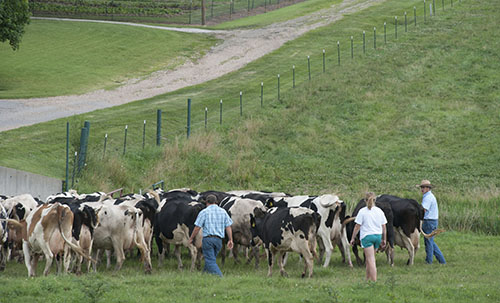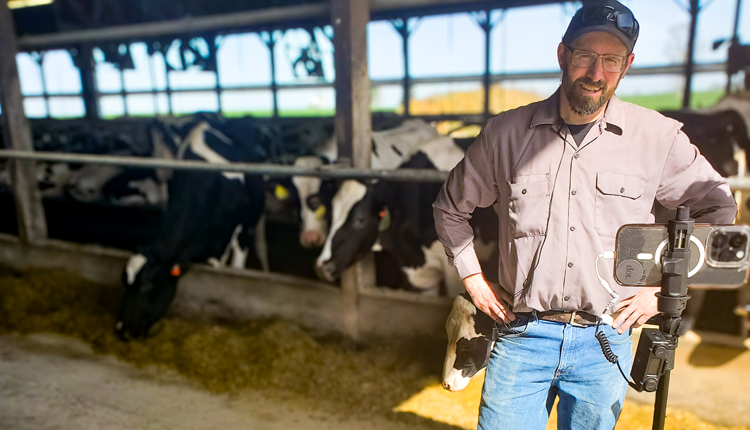
As producers, we take great care to minimize stressors that can impact animal performance. When we think of stress opportunities, facilities, disease, nutrition, milking routine and pen changes often come to mind. Human-animal interaction rarely shows up on our list of concerns for animal stress, yet it's the only management factor that applies to every single livestock operation, large or small, anywhere in the world.
Good stockmanship can pay in more ways than one. In her presentation at the Minnesota Dairy Health Conference, University of Minnesota's Ulrike Sorge referenced past research that has shown livestock handling to be associated with stress. Stress impacts animal health, immune system response, the risk for injuries and reproduction.
It also directly impairs milk production, she explained, because stress hormones inhibit oxytocin release. To prove that point, Sorge mentioned a University of Minnesota study in which herds that went through a stockmanship training had rolling herd averages 1,800 pounds higher than those without the training.
When we think about moving cattle, we often think about the stress on us, not the cow, Sorge said. But with good handling, both people and animals are less likely to be injured.
It all starts with understanding cattle behavior. According to Sorge, "Cows are very predictable." Cattle will react consistently to a handler's signals, but they need clear and accurate signals to react to. "If a cow is not doing what you asked her to do, then you did not ask her in the right way," she said.
Humans can use position, angle, timing, speed and direction to communicate with a cow or group of cows. Remember that cows have a flight zone and a pressure zone. By entering the pressure zone, you can make a cow start to move.
Put pressure on the cow from the side. If you enter the pressure zone behind her point of balance (her shoulder), she should move forward. If you put side pressure on in front of the shoulder, she will move backwards. Always give the cow time to respond to the signals, and then release the pressure once she starts to do what you asked of her.
If humans understand how cows see, hear and react to the world around them, those senses can be used to help move cattle. Sorge urged producers to think ahead about where you want cows to go or what you want from them before trying to move them.

The author is an associate editor and covers animal health, dairy housing and equipment, and nutrient management. She grew up on a dairy farm near Plymouth, Wis., and previously served as a University of Wisconsin agricultural extension agent. She received a master's degree from North Carolina State University and a bachelor's from University of Wisconsin-Madison.











